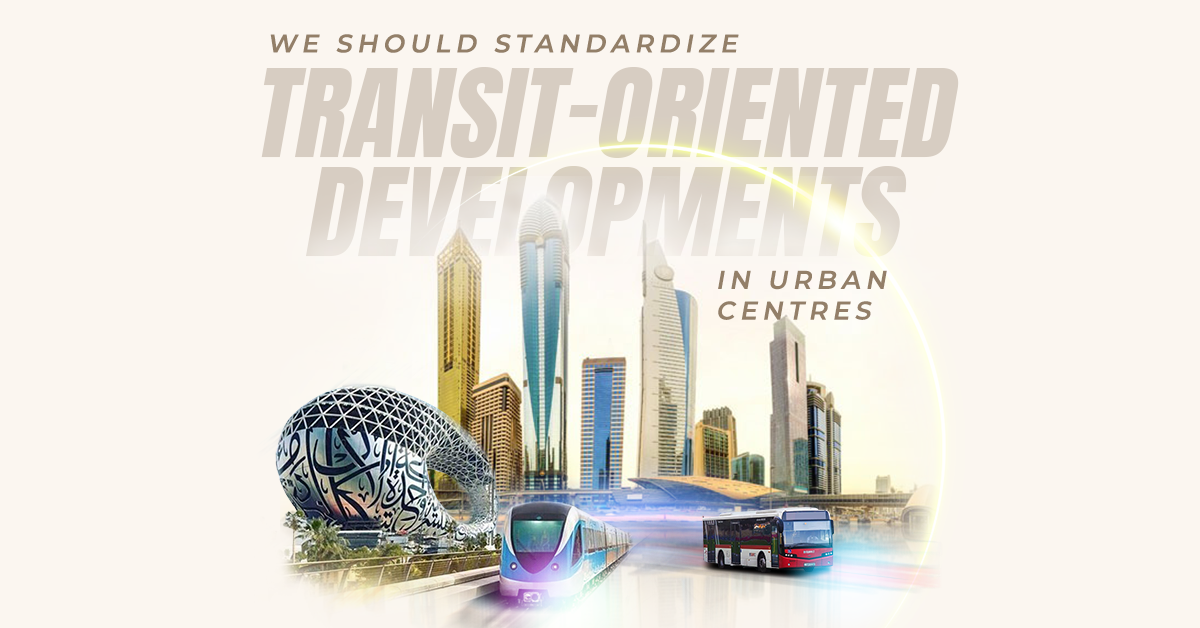We should standardize transit-oriented developments in urban centres
Urban spaces around the globe are increasingly facing enormous pressures — from a rapidly growing population, scarcity of land and resources, overcrowding of both residential and commercial areas, and, most importantly, under-capacitated transit systems.
In such a situation, Transit Oriented Development (TOD) is one of the most practical solutions that can redefine how cities design (and re-design) their spaces. TOD can maximize the utility of the available residential, business, and leisure spaces within walking distance from public transport hubs. That, in turn, promotes a symbiotic relationship between dense urban pockets and suburbs and neighbourhoods.
The many benefits of TOD
One of the main objectives of TOD is to promote public transport, thus avoiding vehicular congestion in busy areas. TOD is crucial in connecting suburbs to cities, as the whole concept revolves around developments located within a certain distance, usually a half-mile or a ten-minute walk, from a public transportation centre. The ability to travel back and forth without going through the nightmare of endless traffic jams and congested city roads is a great attraction to residents, as well as developers.
TOD, however, is not just about ease of commute; it encompasses a whole lot of associated developments. Typically, new residential projects, office space, retail outlets, and entertainment units, including malls and multiplexes, follow a TOD hub, making for mixed-use developments near transit points. This is bound to attract people and make for vibrant, connected communities.
Efficient public transportation is the glue that binds residents and commercial entities, thus leading to the overall development and better quality of life. In fact, when implemented properly, TOD leads to more equitable communities and cities with strong neighbourhood connections, less pollution, and efficient methods of moving people from Point A to Point B.
TOD also enables town developers to co-locate residential, commercial, educational, entertainment, and infotainment facilities around transit hubs in a just and equitable manner. As these hubs grow, they are serviced by bus stops and train stations, which provide connectivity to other parts of the cities. With so many advantages on offer, TOD is the way to go if local governments and city planners want to improve the character of urban spaces and infuse vitality into them. Suburban areas should also be revitalized and spruced up so that citizens have a choice of residence — if people want to live a little away from the main city, they need to be provided with the same facilities that city-dwellers get.
But bear in mind the original inhabitants
While TOD is the way forward for cities and towns, developers need to find ways to grapple with the challenges. The most controversial outcome of TOD is either displacement of the original residents of an area or detriments to their quality of life. While the gentrification of a neighbourhood is good for those with means, it can create misery for the original demographic — it has the potential to lead to a shift in a neighbourhood’s racial or ethnic composition and create class divisions.
This has been evident in several cities, with the wealthy pouring into a suburb or less developed area of a city, leading to a much higher cost of living, which the original inhabitants may not be able to afford. Town planners have to strategize and ensure that in the process of providing a better quality of life to one section of the population, another demographic does not suffer. But if executed properly, with foresight and sensitivity, TOD is the way forward and should be adopted as the standard model of urban development.




